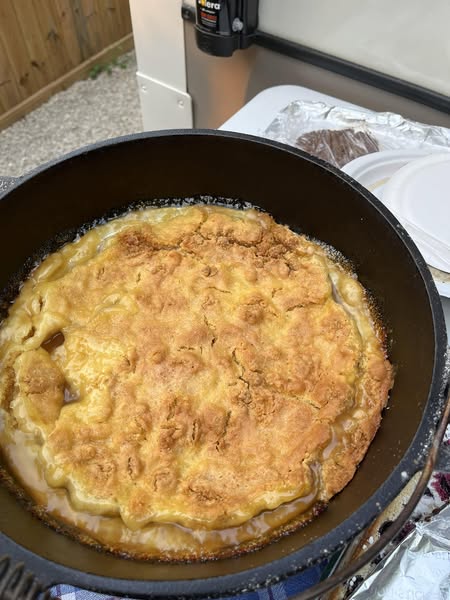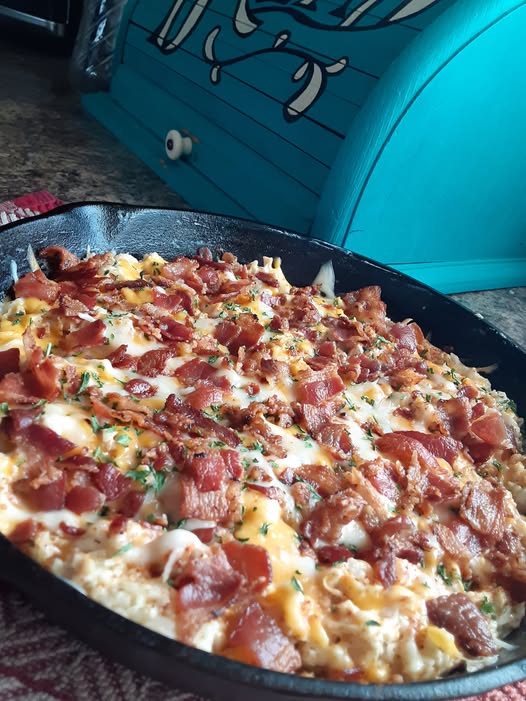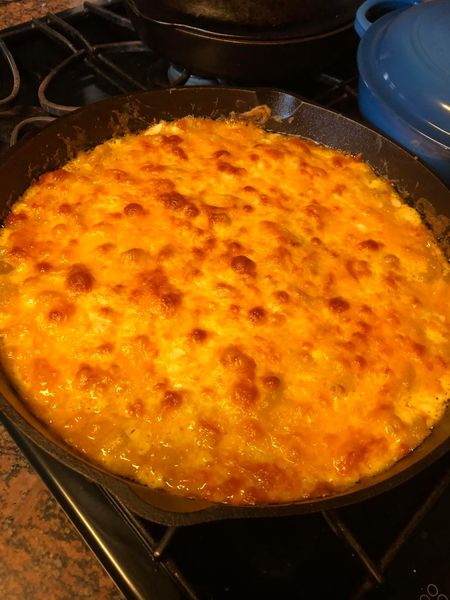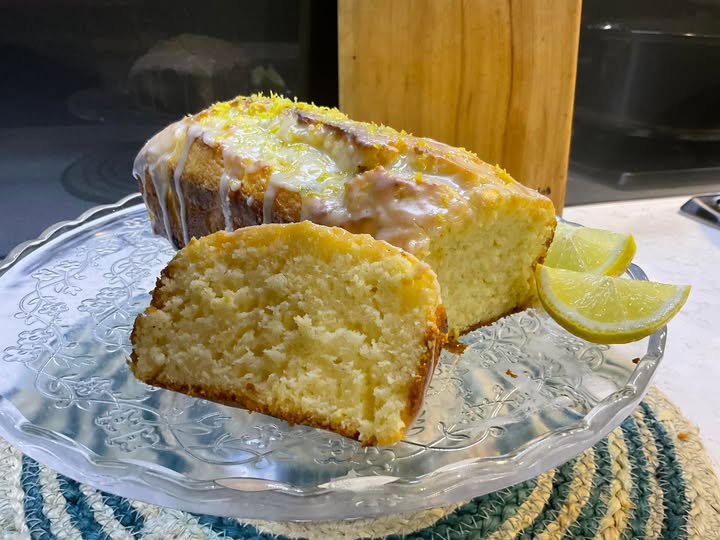How to Restore Old Cast Iron Pans with Vinegar
Bringing My Nanny’s Cookware Back to Life
🪞 A Labor of Love (Intro Story)
Some people see a rusty skillet and think “trash.” I see a lifetime of Sunday breakfasts, golden cornbread edges, and my Nanny’s gentle hands flipping biscuits with a fork she probably had since the ’70s.
These pans were tucked away in the garage for decades, covered in thick rust from the humid southern air. When I pulled them out, they looked hopeless — layers of orange and brown, rough to the touch. But I couldn’t let them go. These weren’t just pans; they were memories.
So, I spent a full week — soaking, scrubbing, and seasoning until they gleamed again. It was truly a labor of love. 🖤

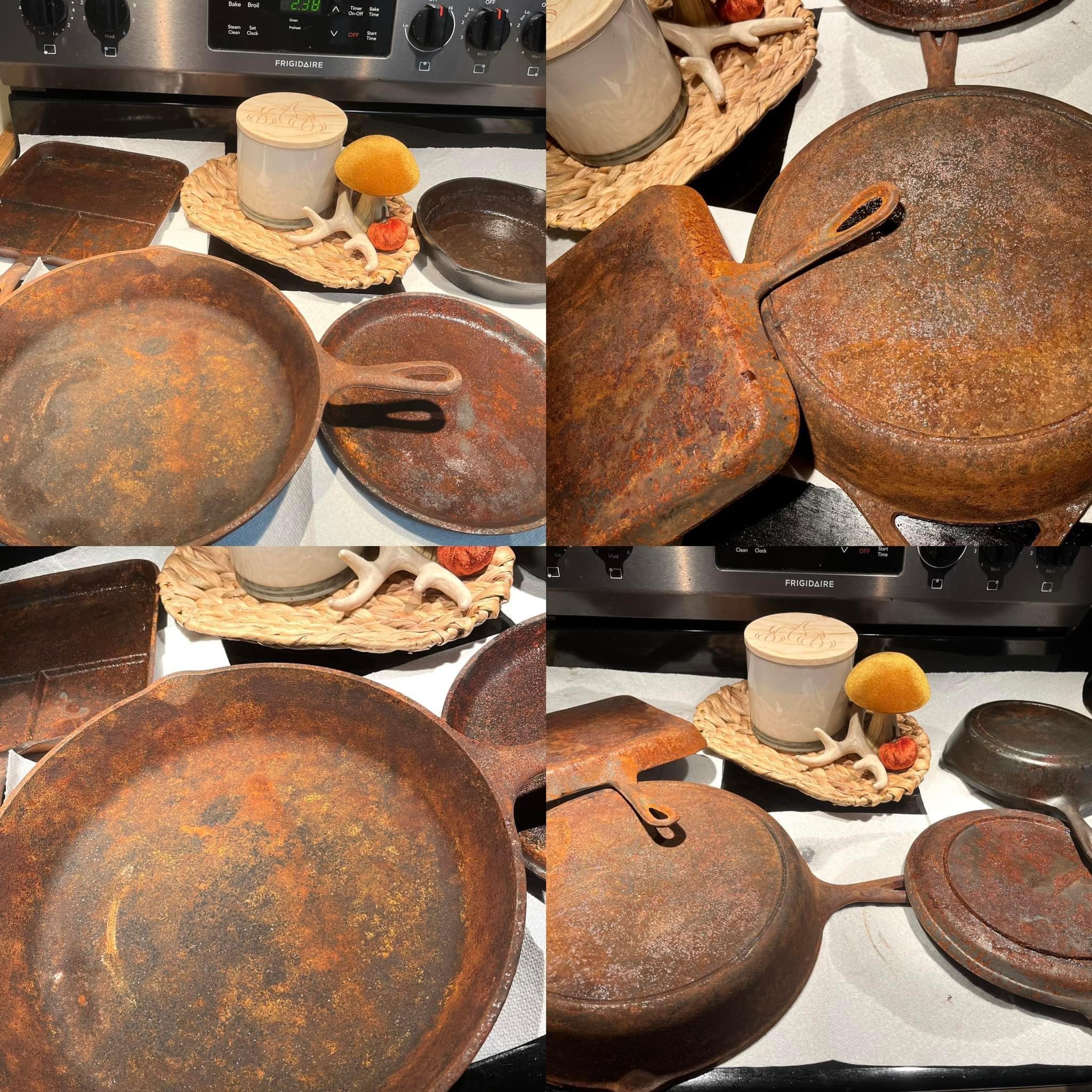
💖 Why You’ll Love This Cast Iron Restoration Method
- Simple ingredients: Just white vinegar, baking soda, and grapeseed oil.
- No harsh chemicals: 100% kitchen-safe method.
- Budget-friendly: Uses what you already have at home.
- Sentimental value: Bring heirlooms or thrifted finds back to life.
- Durable results: Proper seasoning ensures your pans stay rust-free and smooth for years.
🥢 What You’ll Need
Tools & Materials:
- White vinegar
- Water
- Baking soda
- Steel wool pads
- Steel brush (for corners and edges)
- Paper towels or lint-free cloth
- Oven-safe gloves
- Grapeseed oil (for seasoning)
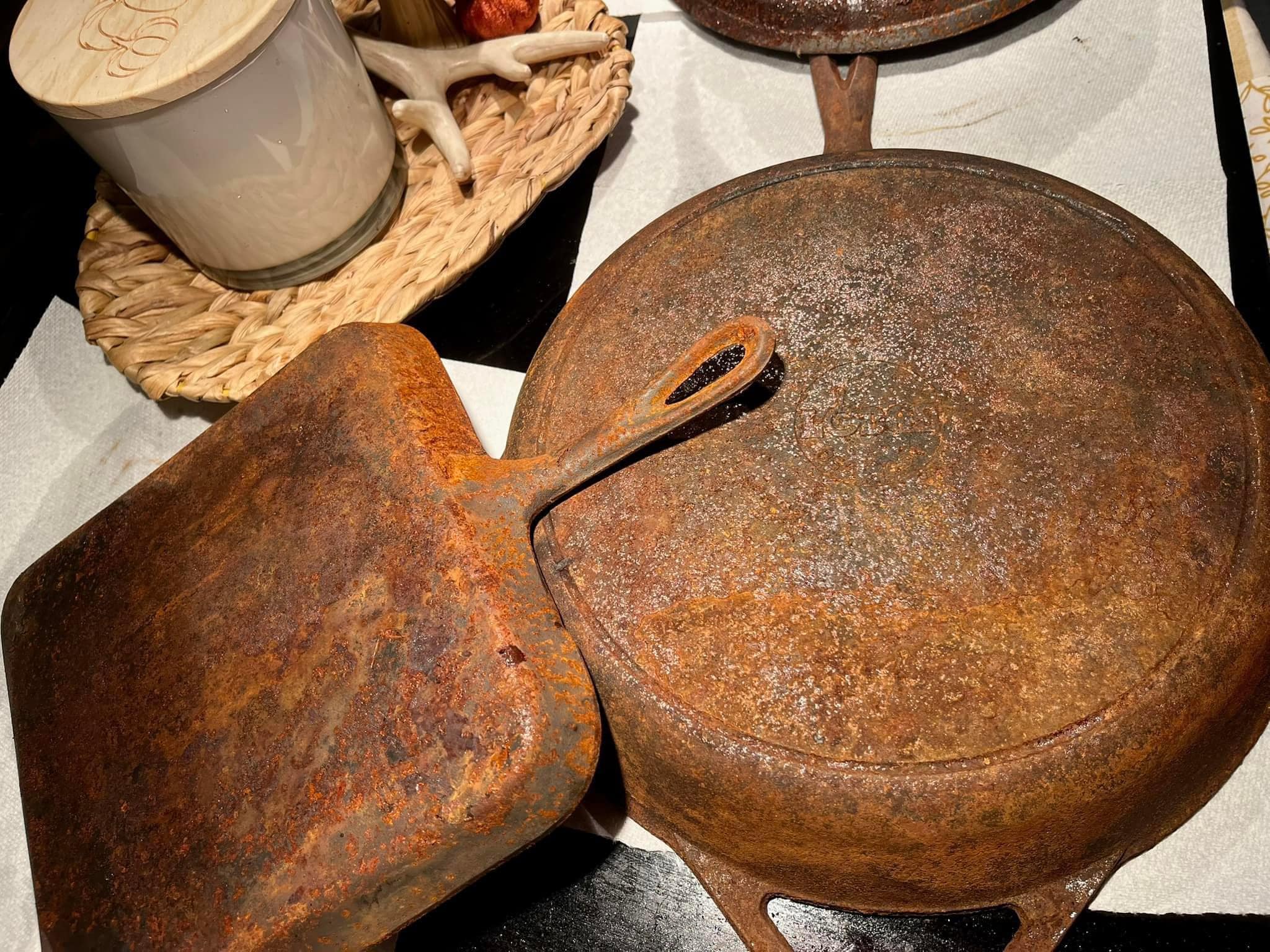
🧽 Step-by-Step Instructions
Step 1: Soak in a Vinegar Bath
Mix 50/50 white vinegar and water in a large tub or sink — enough to submerge your cast iron pieces. Let them soak for 1–3 hours, checking every 30 minutes.
⚠️ Don’t soak overnight — vinegar can start eating into the metal.
Step 2: Neutralize with Baking Soda
Once the rust loosens, remove the pans and sprinkle baking soda all over. This neutralizes the vinegar’s acidity.
Then, scrub with steel wool and a steel brush to reach the corners. I had to repeat this entire soak-and-scrub process twice for some heavily rusted pans — that’s how deep the rust went.

Step 3: Rinse and Dry Completely
Rinse the pans thoroughly in warm water and dry immediately. You can set them in a warm oven (200°F) for about 15 minutes to ensure they’re bone dry before seasoning.
Step 4: Season Generously
Rub each piece with grapeseed oil — inside, outside, handle and all. Wipe away excess oil with a clean cloth (they should look slightly glossy, not greasy).
Place pans upside down in the oven at 500°F for 1 hour, then allow to cool completely in the oven. Repeat this process 5–6 times for a deep, durable black seasoning.
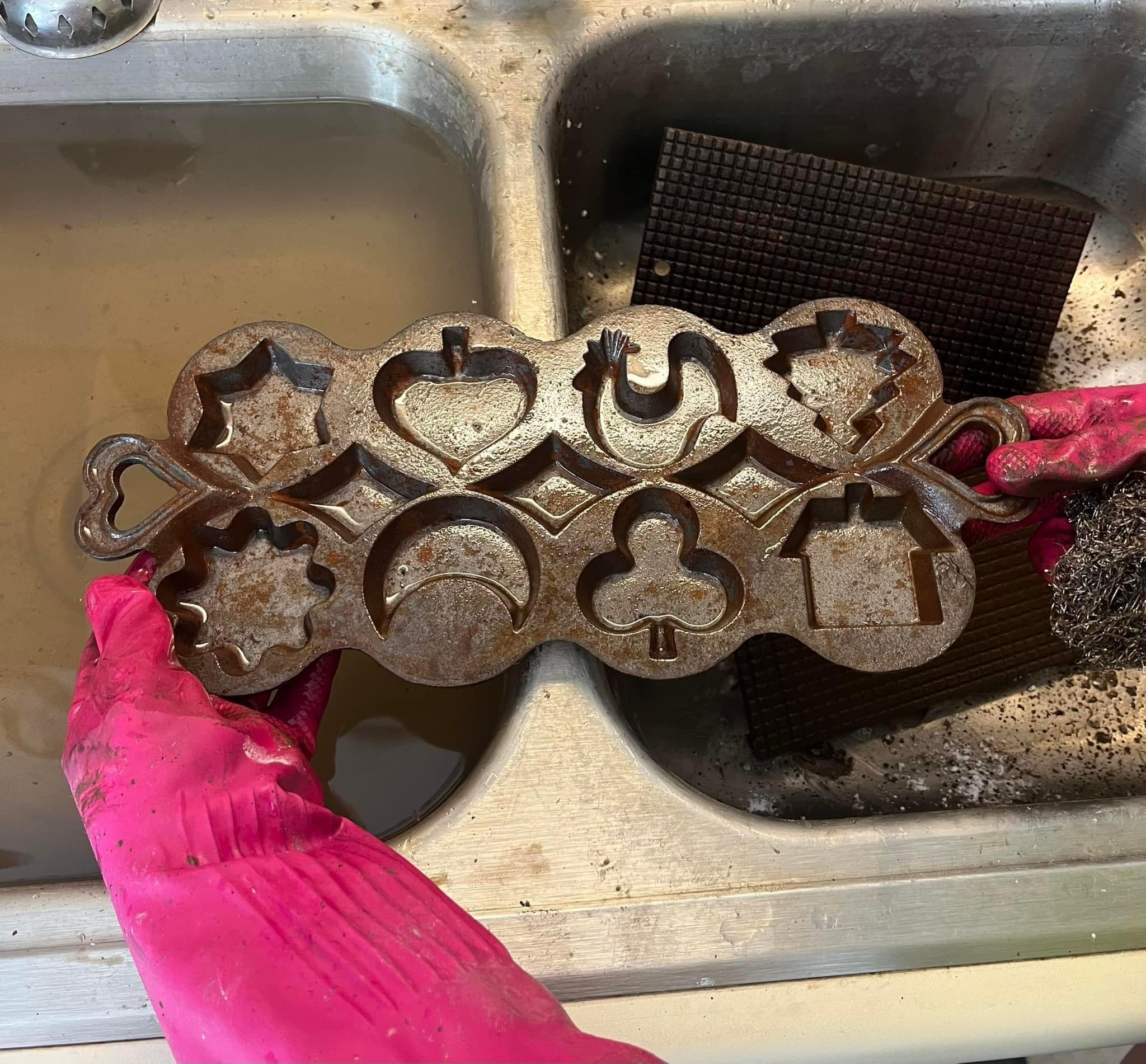
Step 5: Admire Your Work
Once cooled, the transformation is truly remarkable. The dull, rusty pans now shine with a deep black patina — smooth, nonstick, and ready to last another generation.
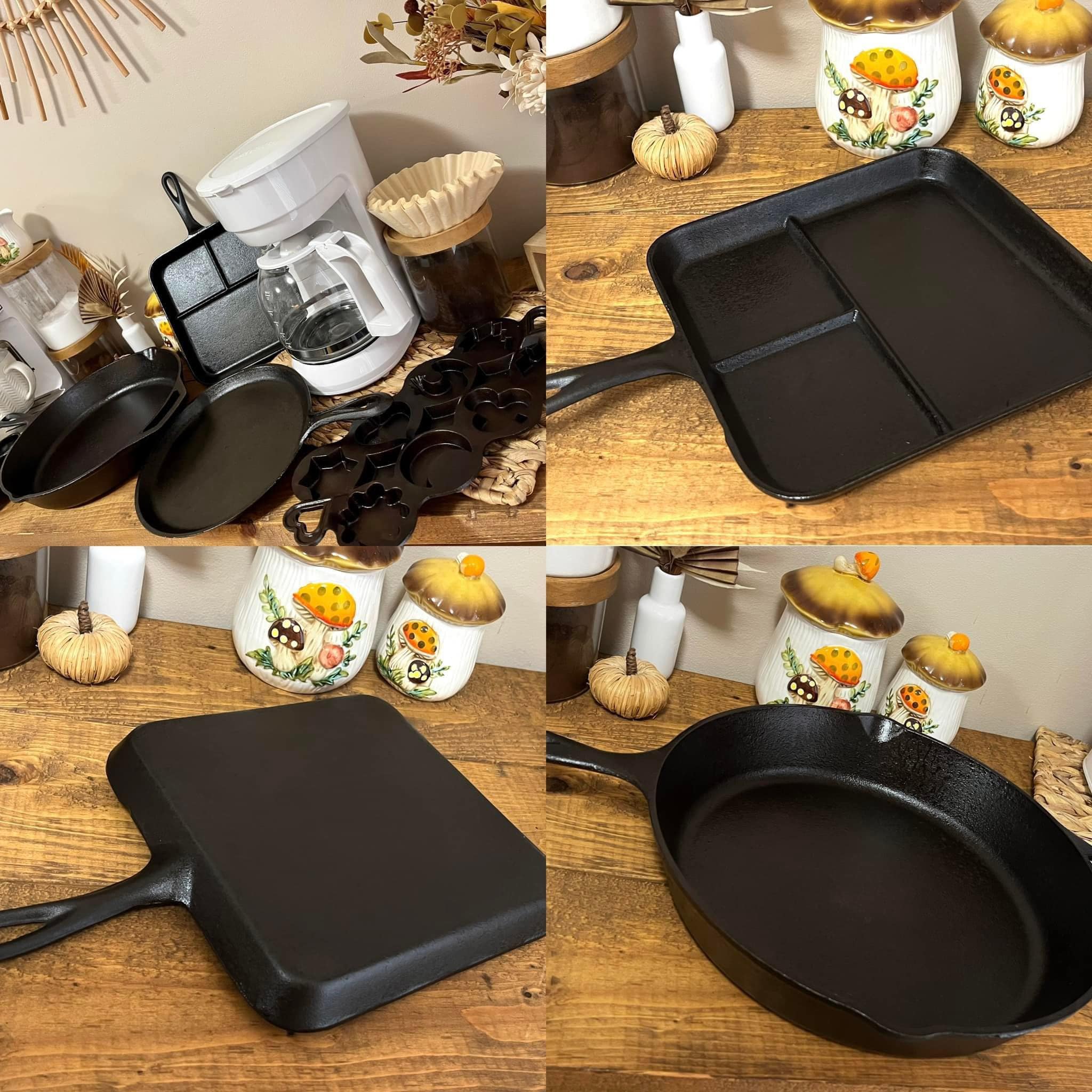
🧠 Expert Tips & Troubleshooting
- Don’t skip drying: Even a few drops of water can cause flash rust.
- Avoid soap after seasoning: Use coarse salt and a scrub cloth instead.
- Keep oil handy: Rub a thin coat after each use to maintain shine.
- Use often: The more you cook, the better your seasoning gets.
- Revive mild rust: A quick scrub and re-oil usually do the trick.
🍳 Variations & Fun Projects
- Thrift Store Finds: Restore old pans from estate sales or flea markets — they often have great character.
- Shape Pans: Heart molds, cornbread sticks, and waffle pans all season beautifully with this method.
- Gift Idea: Clean and season a vintage piece, tie with twine, and include your favorite family recipe card.
[Image: decorative cast iron mold | Alt text: Restored vintage cast iron mold with heart, rooster, and moon shapes after cleaning and seasoning]
🧺 Storage & Maintenance
Store your cast iron in a dry place (not under the sink or in a humid garage). If stacking pans, layer paper towels or cloths between them to prevent scratches and moisture buildup.
❓ FAQs
Q: Can I use apple cider vinegar instead of white vinegar?
A: White vinegar works best because it’s pure acetic acid — more effective for rust removal.
Q: How do I know when to stop soaking?
A: When rust loosens and the metal feels rough but not flaking, it’s time to scrub.
Q: Why grapeseed oil?
A: It has a high smoke point (around 420°F), creating a hard, smooth seasoning that lasts longer than vegetable or canola oil.
Q: My pan looks blotchy after seasoning — what happened?
A: It’s normal! Uneven spots even out with regular cooking and re-oiling.
These pieces may have started out forgotten and covered in rust, but with a little patience and care, they’re now as beautiful and functional as the day my Nanny first cooked in them.
If you’ve got old cast iron hiding in the garage, don’t throw it out — bring it back to life! 💪
Did your grandma have cast iron like this too? Let me know in the comments below, and don’t forget to share this post or 📌 save it to Pinterest for later!

How to Restore Old Cast Iron Pans with Vinegar
Ingredients
- White vinegar equal to water amount for soak
- Water equal to vinegar amount
- Baking soda as needed
- Steel wool pads
- Steel brush
- Paper towels
- Grapeseed oil
Instructions
- Mix vinegar and water in equal parts. Soak pans for 1–3 hours.
- Neutralize with baking soda and scrub thoroughly.
- Rinse and dry completely.
- Apply grapeseed oil and wipe away excess.
- Bake upside down at 500°F for 1 hour.
- Repeat 5–6 times for a perfect black finish.

